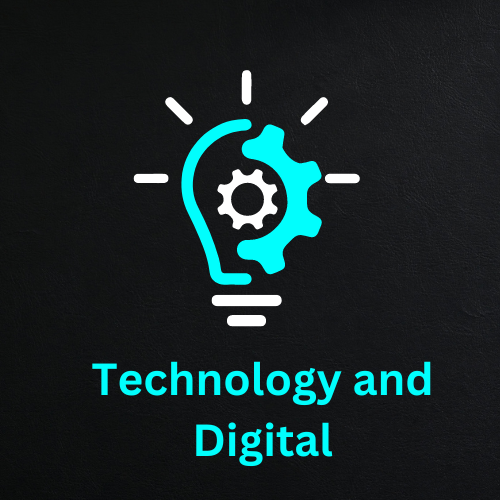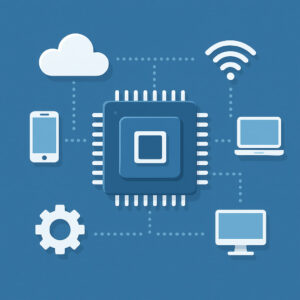Transforming Lives, Shaping Futures

Technology is no longer a backdrop to human life—it is the rhythm, the invisible current that guides daily existence. In 2025, it entwines with every corner of modern life, from the flicker of a smart screen to the silent intelligence of interconnected devices. It bridges distances, unlocks creativity, and transforms simple routines into experiences colored with efficiency, insight, and wonder.
🌐 Artificial Intelligence: From Assistance to Insight
Artificial Intelligence has evolved beyond mere automation. In 2025, AI anticipates needs, personalizes experiences, and augments decision-making. In education, adaptive systems create lessons tailored to individual learning styles, making every student’s journey unique. Healthcare leverages AI to predict potential illnesses, enabling timely intervention before conditions escalate.
Practical Tip: Integrate AI tools gradually—start with personal task managers or AI-powered scheduling to experience the immediate benefits without feeling overwhelmed.
Yet, AI also brings ethical considerations. Transparent algorithms, responsible data usage, and fair decision-making ensure that intelligence serves humanity, not the other way around.
📱 Connected Devices: Seamless Living
The Internet of Things (IoT) now creates environments that respond to human behavior with subtlety and precision. Smart homes adjust lighting, climate, and appliances to individual routines. Wearables monitor health and wellness, offering actionable insights that improve daily life. Devices communicate silently, orchestrating a life that feels almost effortless.
Practical Tip: Begin with one smart ecosystem, such as lighting or security, before gradually expanding to a fully interconnected environment.
Picture a morning where blinds open with the sunrise, coffee brews just in time, and the home environment adjusts to mood and schedule. Technology quietly transforms ordinary moments into poetry in motion.
💡 Sustainable Innovations: Technology with Purpose
Environmental consciousness shapes the latest wave of technology. Energy-efficient appliances, solar-powered systems, and sustainable materials redefine innovation. Electric vehicles, smart grids, and eco-friendly buildings demonstrate that technological advancement and ecological responsibility can coexist.
Practical Tip: Introduce sustainable tech gradually—solar chargers, smart thermostats, or energy-efficient lighting are small steps that yield tangible environmental benefits.
In 2025, technology embodies responsibility. It proves that progress need not come at the expense of the planet, blending convenience with conscientiousness.
🌍 Digital Collaboration and Immersive Experiences
Virtual reality (VR) and augmented reality (AR) are redefining collaboration. Teams across continents can work in shared virtual spaces, bridging distance and time. Designers, educators, and professionals explore new realms of creativity, turning ideas into immersive experiences that were once impossible.
Practical Tip: Explore AR or VR for small-scale learning sessions or project planning before integrating them fully into daily workflows.
Distance dissolves in these virtual environments. What once felt impossible—remote collaboration, interactive training, and immersive presentations—is now routine, expanding both imagination and productivity.
📊 Data and Analytics: Illuminating Complexity
Data has become the language of insight. Predictive analytics, real-time monitoring, and intelligent algorithms transform raw information into actionable understanding. Businesses forecast trends, healthcare systems anticipate patient needs, and individuals make informed decisions that enhance daily life.
Practical Tip: Start with simple data tools to observe patterns in personal or professional contexts, gradually exploring predictive insights for deeper understanding.
Data is not just numbers; it reflects human behavior, societal trends, and emerging opportunities. Used thoughtfully, it empowers decisions that shape both present and future.
✨ The Human Touch in Technology
Despite the marvels of AI, IoT, and data analytics, the ultimate value of technology lies in its impact on human life. It connects communities, sparks creativity, and transforms routines into moments of meaning. Thoughtful integration balances efficiency with ethics, innovation with sustainability, and convenience with purpose.
From intelligent systems to sustainable innovations, immersive collaboration to data-driven insight, technology in 2025 acts as both guide and companion. It amplifies creativity, streamlines life, and creates an interconnected tapestry where every action, decision, and innovation contributes to the collective human story.
How is technology shaping your world today? Which innovations have transformed your work, learning, or daily life? Explore, adapt, and share—every experience enriches the evolving landscape of modern technology.




